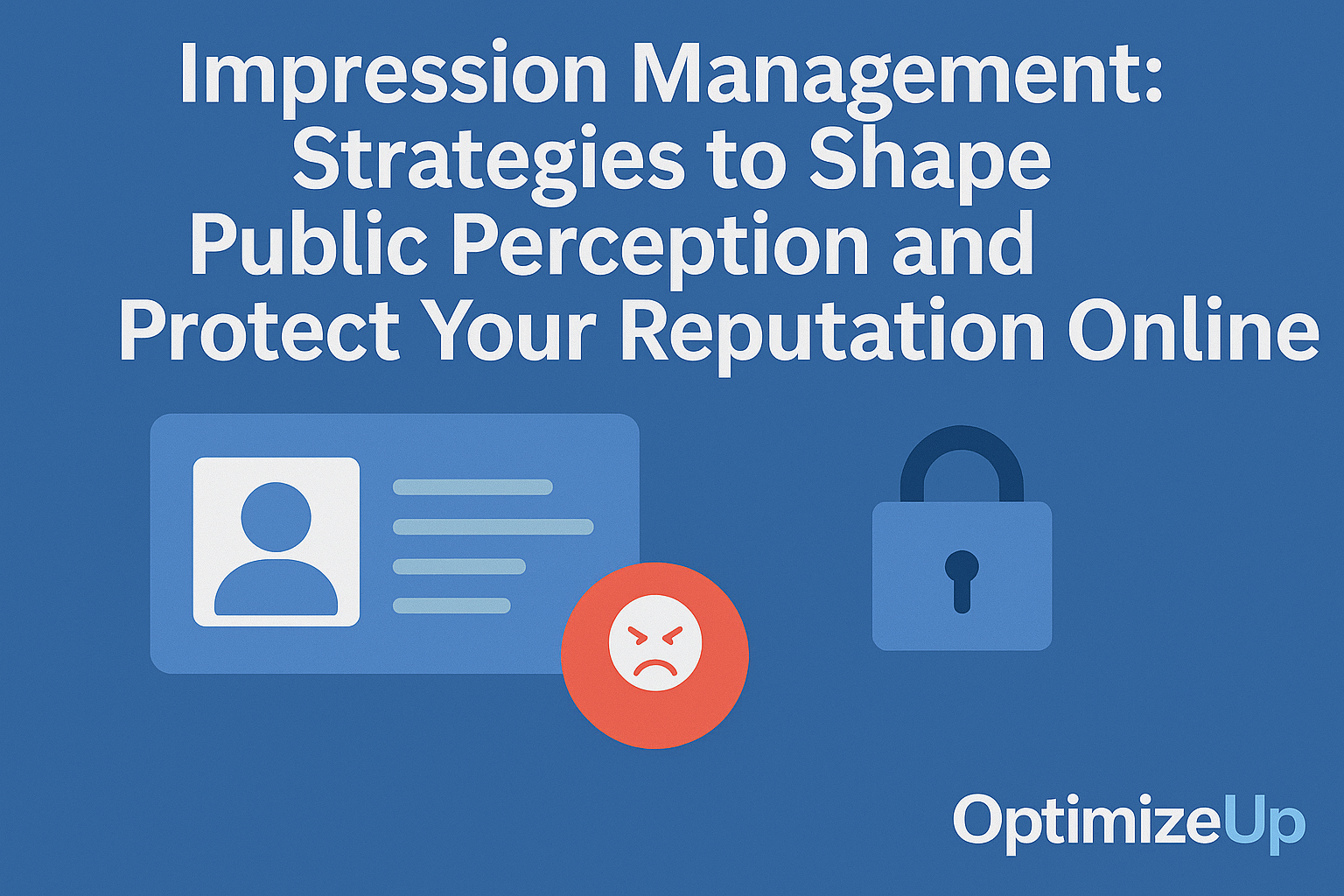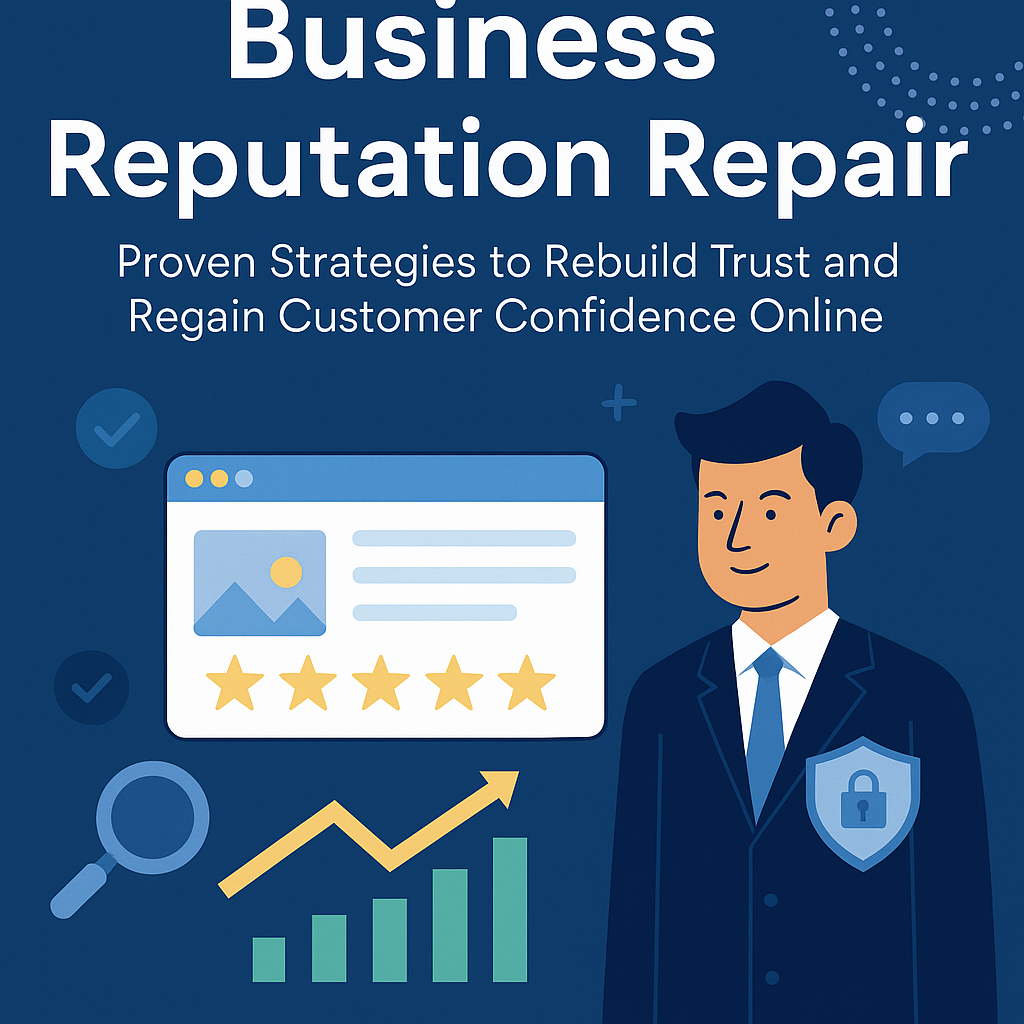Understanding Impression Management in the Online Era
Impression management refers to the strategic process of controlling how others perceive you, especially in high-visibility environments such as search engines and social media platforms. Coined by sociologist Erving Goffman, the concept originated in face-to-face interactions, but its relevance has exploded in the age of online transparency and perpetual data exposure.
Why Impression Management Matters More Than Ever
- First Impressions are Digital: Most interactions begin online—via search engines, social media, or LinkedIn. The narrative you don’t control will define you.
- Trust and Credibility: Inconsistent branding or negative links can severely damage your ability to secure jobs, partnerships, or media opportunities.
- Privacy and Safety: Poor management can lead to doxxing, harassment, or identity theft.
Whether you’re a CEO, influencer, or job seeker, you need to shape your presence strategically.
Core Elements of Effective Impression Management
1. Online Brand Consistency
Maintain uniformity in:
- Profile pictures
- Bios and descriptions
- Username/handle structure
- Posting frequency and tone
2. Controlled Disclosure
Be strategic about:
- Personal anecdotes
- Political views
- Geolocation data
- Relationship status
Oversharing fuels misinterpretation and exploitation.
3. Search Engine Presence
Your Google search results are your digital resume. Regularly audit and optimize:
- Personal websites
- Author bylines
- Reviews
- Press releases
- LinkedIn and professional directories
4. Social Media Curation
Remove or hide:
- Controversial posts
- Old embarrassing content
- Tagged images that don’t align with your message
Proactively post thoughtful, relevant content in line with your values and expertise.
5. Third-Party Endorsements
Leverage:
- Guest blog posts
- Testimonials
- Thought leadership features
- Expert interviews
Positive associations elevate perceived credibility.
Tactics for Managing Impressions Across Platforms
- Custom URL: e.g., linkedin.com/in/yourname
- Keyword-optimized headline and summary
- Featured media: presentations, publications, awards
Twitter/X
- Keep tweets professional and on-brand
- Use pinned tweets to highlight major achievements
- Avoid political rants or sarcasm that can be misinterpreted
- Tighten privacy settings
- Limit access to friends-of-friends
- Be mindful of group participation and page likes
- Curate with a narrative: travel, work, family, or causes
- Use Stories for behind-the-scenes looks that humanize without oversharing
- Be selective with hashtags to avoid spammy impressions
Google Search
Use the Google Me tool and Google Alerts to monitor how you’re being represented.
Advanced Reputation Control Techniques
Search Engine Optimization (SEO) for Personal Reputation
Use high-authority platforms to publish:
- Blogs
- Interviews
- Thought leadership pieces
- Academic publications
Target keywords related to your name and industry:
Example: "Dr. Sarah Kim healthcare innovation" Create internal linking structures and backlinks to boost visibility.
Reputation Firewalls
- Register your name as a domain (e.g., yourname.com)
- Claim your name on all major platforms—even ones you don’t use
- Use services like About.me or Linktree for centralized branding
Crisis Preparation
- Maintain a content reserve to respond rapidly in case of a scandal
- Use sentiment analysis tools (like Brand24 or Mention) to gauge shifts in perception
- Know when to escalate to legal or professional reputation services
Who Needs Impression Management the Most?
- Executives: Investor trust hinges on public perception.
- Job Seekers: Recruiters admit to screening candidates online.
- Influencers and Creators: Your online identity is your brand.
- Medical/Legal Professionals: Client and peer perception shapes referrals and credibility.
- Students and Recent Grads: Online reputations form before careers even start.
The Psychology Behind Public Perception
Goffman’s Dramaturgical Model
Goffman described human interaction like a stage performance. Online, this becomes literal:
- Front Stage: Public profiles and curated posts
- Back Stage: Private messages, deleted posts, archived comments
Mastering both ensures cohesive and authentic communication.
Confirmation Bias
People seek out info that confirms what they already believe. One piece of negative content can disproportionately skew perceptions.
Primacy Effect
First impressions stick. What’s seen first—whether a mugshot, outdated profile, or press hit—will define future interactions.
Tools and Resources for Impression Management
- Google Alerts – Set up name and brand term alerts
- BrandYourself – DIY reputation management platform
- Grammarly and Hemingway – Improve communication clarity
- Canva – Design clean, professional visuals
- Buffer or Hootsuite – Schedule social posts
Legal and Ethical Boundaries
Be wary of:
- Fabricating credentials
- Plagiarizing bios or blog posts
- Hiding public records through illicit methods
Authenticity builds trust. Reputation built on lies crumbles quickly under scrutiny.
For sensitive issues, consider:
- Legal name changes
- Reputation rehabilitation via news stories
- Sealing or expunging old court records
How Optimized Up Supports Your Public Image
Optimized Up helps individuals and businesses take proactive control of their reputations:
- Content suppression and removal
- Search result repair
- Personal branding strategy
- Custom blog and thought leadership creation
- Crisis response campaigns
Don’t let one misstep define your narrative. Rebuild trust and credibility with expert help from Optimized Up.
Frequently Asked Questions
To control how others perceive you by managing the presentation of personal or organizational identity.
Create and promote positive content across high-authority platforms. Suppress or deindex negative pages using SEO or professional services.
No. Ethical impression management is about authentic representation. Manipulation involves deceit and misrepresentation.
Not effectively. It requires active monitoring, content curation, and reputation management.
Not effectively. It requires active monitoring, content curation, and reputation management.
Yes. Brands carefully control narratives via PR campaigns, social media, executive bios, and crisis management strategies.
Use Google Alerts, image search, name + keyword queries, and brand monitoring tools to stay informed.
It can prevent future issues but may raise suspicion or reduce discoverability. Private, polished profiles are often better.
Yes, depending on the source and content. Our team uses legal, SEO, and suppression tactics to manage reputation.
Quarterly is ideal. Use spreadsheets or project management tools to track changes and maintain control.
Engage in transparency, publish positive narratives, and let Optimized Up launch a recovery campaign.





